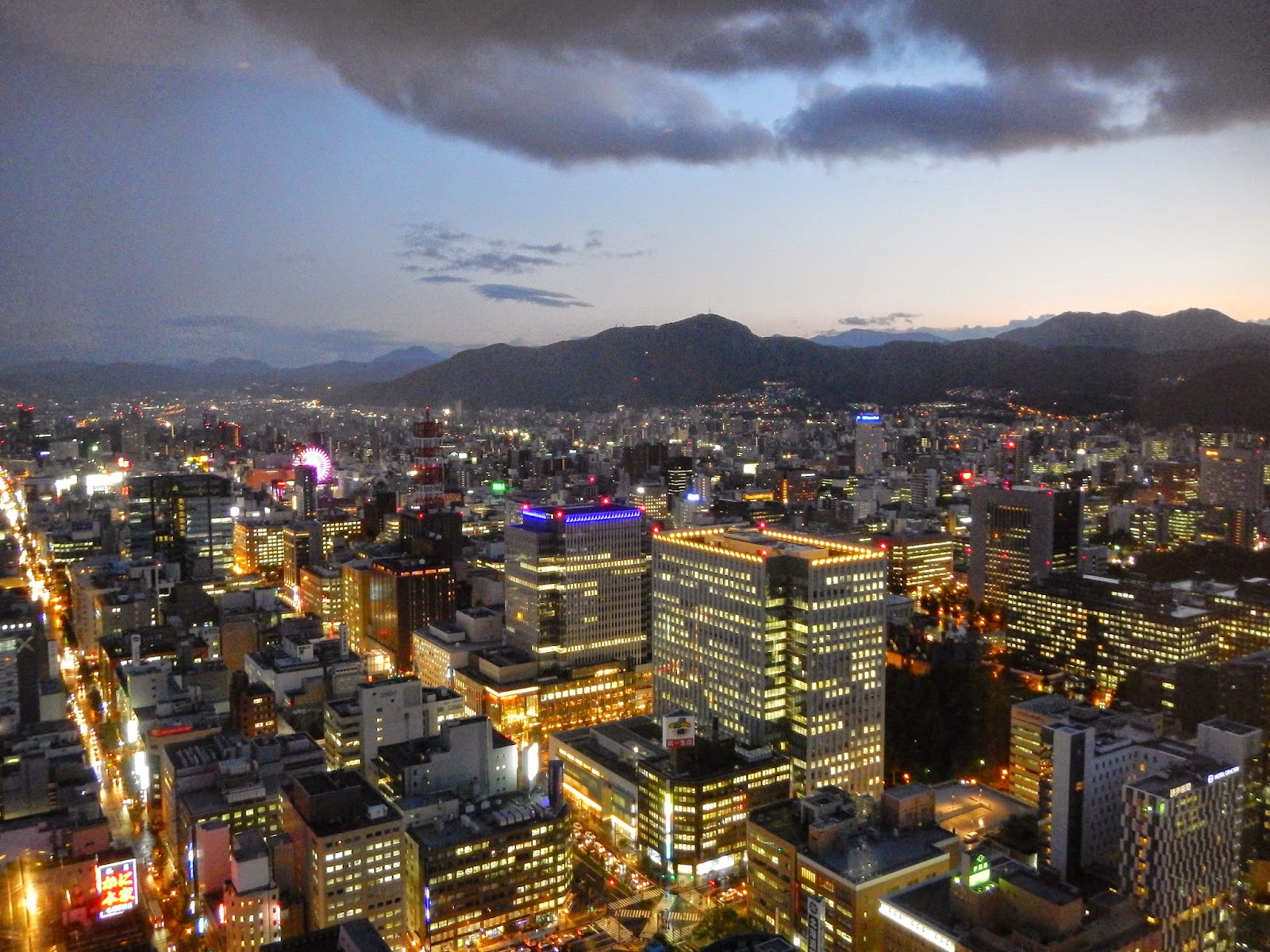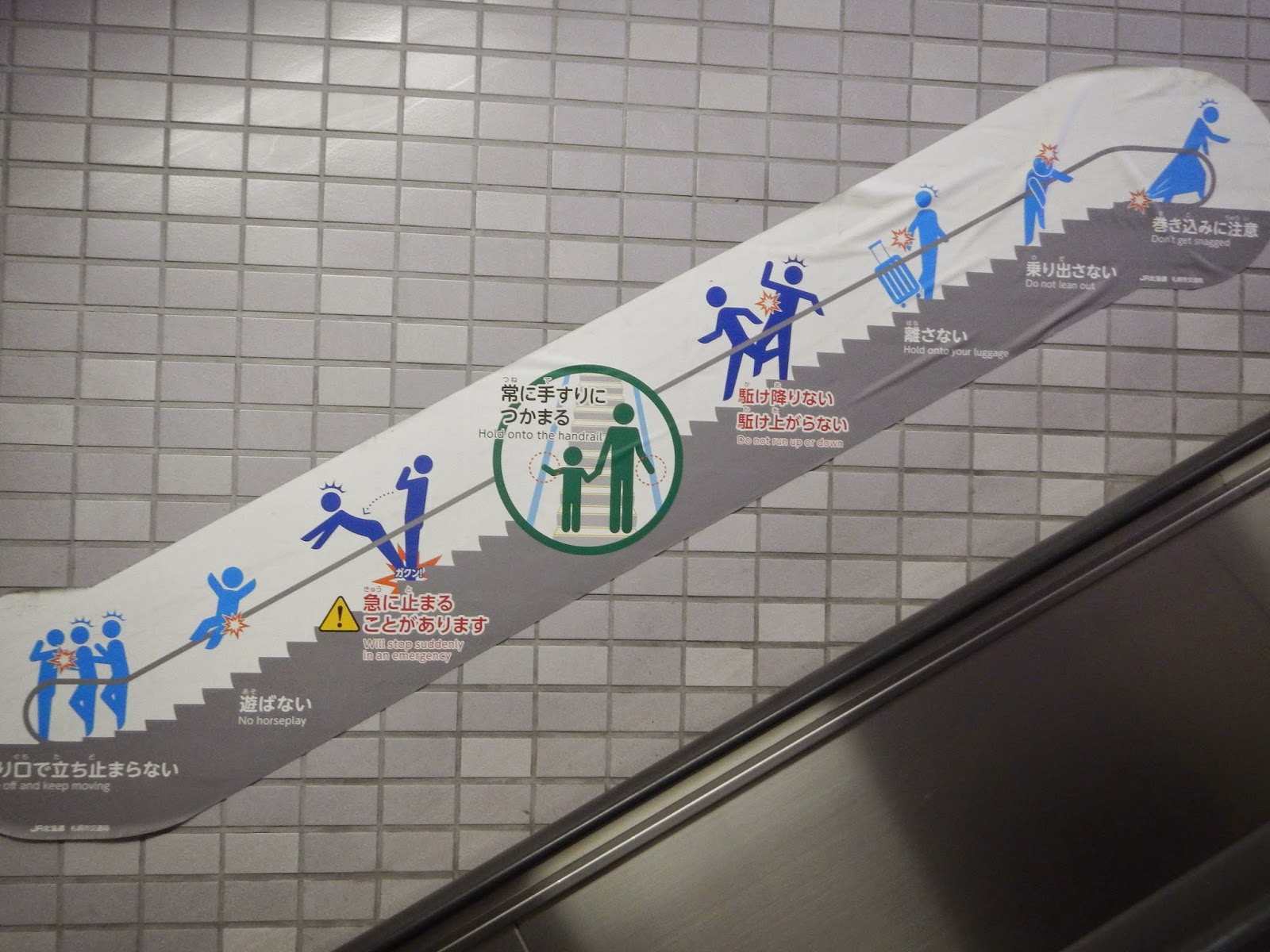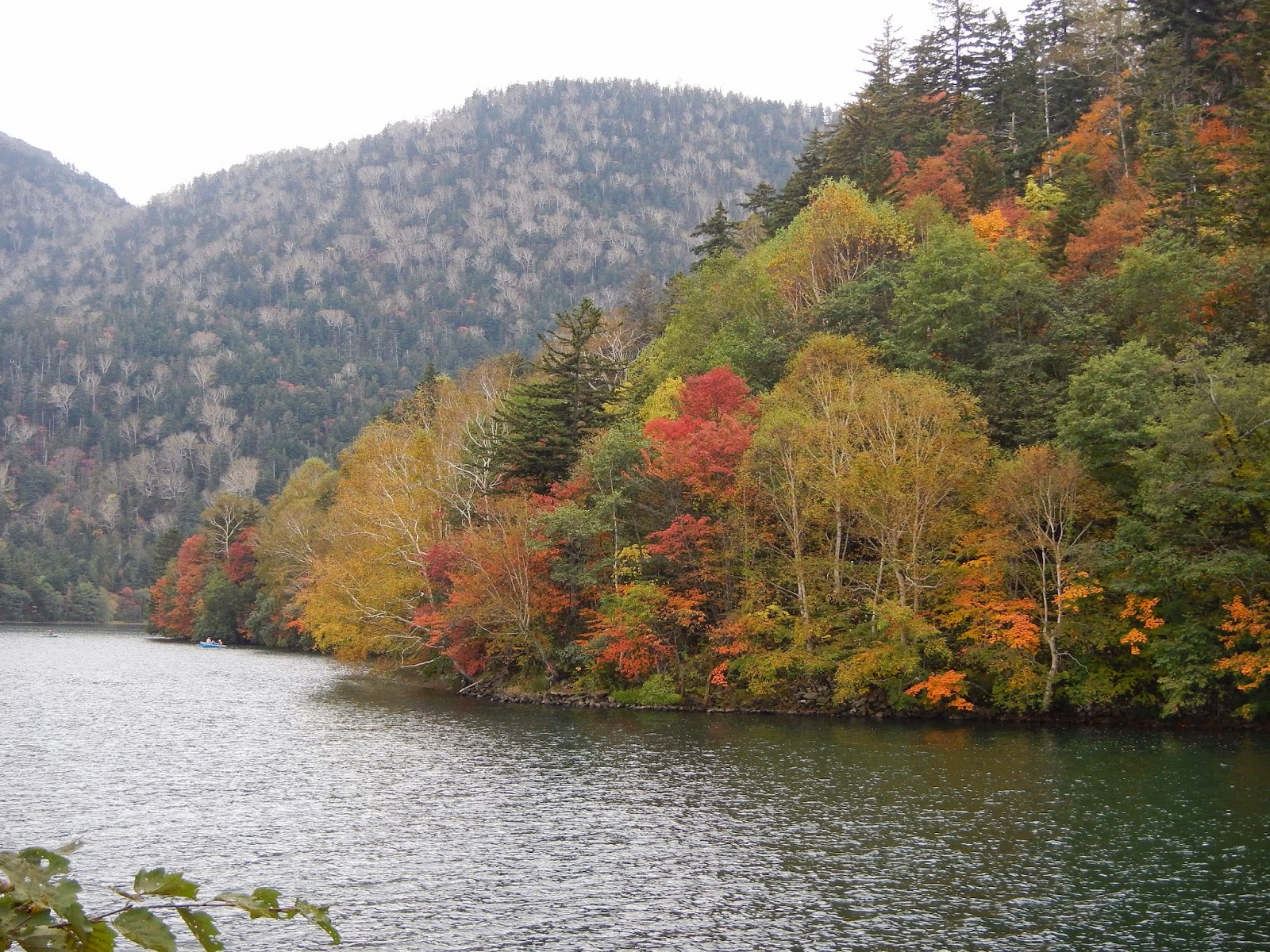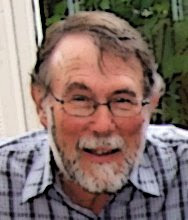Japan had never really been on our radar as a destination, but when the International Association for Astacology (see 2010 posts) chose Sapporo for the 2014 conference that seemed like a good excuse to visit somewhere very different. Not without some trepidation: not only a language that offers absolutely no clues, but an undecipherable script! Inscrutable people. Strange food. Chopsticks! But as it turned out, all was very well, as I hope to show in the next couple of posts.
We flew from Sydney to Tokyo, nine hours in the air, but only a one hour time shift, then straight on to Sapporo, the capital of Hokkaido, and dimly familiar from the 1972 Winter Olympics. New Chitose airport is a 40 minute train ride for Sapporo and as we drew nearer we realised that this is a BIG city, and yet a very new one, effectively not much more than 100 years old. So the buildings are largely square and multi-storey, without much architectural merit. Sapporo railway station quickly showed us another characteristic of Sapporo: this is an area that gets a lot of winter snow, so the city has another layer or two underground, shopping malls, restaurants, long passages etc. It also has a very efficient and handy subway system that we used all the time with a day pass for ¥800 (about $8) or just ¥500 on the weekend. Our hotel was a bit out of the centre, but with a subway station just around the corner we could be in the middle of town in ten minutes, or out at the zoo where the conference was held in just a bit longer.
Sapporo by night, from the top of the JR Tower.
Sapporo by day, JR Tower right of centre.
JR Station, or rather the Daimaru department store. The station is all underneath.
It was a fairly hectic week at the conference; as well as giving a presentation I had to chair a session, judge the posters, attend Board meetings etc., so Jeannie had to entertain herself, which she did in the local parks and the shopping malls (quite safe, she never buys anything), all with the help of the subway. With everything double-labelled in english, the subway was easy to use, but the only tricky bit with subways is knowing where you are when you re-surface, especially when there are several exits. In Sapporo all the exits have the compass points marked on the sidewalk as you emerge, and once we had got over the odd effects of changing hemisphere on our internal compasses, navigation became simple. Jeannie quickly discovered that the Lawsons and Seven-Eleven chain stores are a reliable source of food, and thank goodness, the 7/11 ATM recognised our debit card. And she discovered the fish market! Hokkaido is sea food central in Japan, and we were there during the salmon season. The quantity and diversity of sea food on sale was amazing and I just hope that the fisheries are being carefully managed. Many of the stalls also offered their wares cooked on the spot, and on my day off we had a crab (hairy crab and king crab) rice bowl at one of them. But I might leave the food for another post.
Subway gates. Instructions in english.
Compass points at subway entrance. Errrr....
Escalator warnings. That's why the Queen never travels by escalator.
Subway stairs. Helpfully marked to show how many calories you've burned by not taking the escalator.
Inquisitive fox, Sapporo Botanical Gardens. The sleeping tourist never woke!
Sapporo fish market. Molluscs.
Sapporo fish market. Hairy and king crabs.
Sapporo fish market. Fish and squid.
The zoo is in Maruyama Park, in the hills to the west of the city, and it has a network of walking trails over the wooded slopes. We managed a couple of walks up to a lookout over the city, passing a series of little Buddhist shrines or memorials, each wearing a little knitted beanie. Why? So much we didn't know about the culture. It was only later that we discovered that brown bears are not confined the wilder parts of Hokkaido! When Jeannie found a park closed, with a bear warning, we realised that those tinkly bells that some hikers had on their backpacks were there for a reason.
Memorials? Maruyama Park. There were dozens of them.
Warning of a bear sighting in Sapporo park.
The conference took us out for an afternoon's crayfish hunting with some conservation volunteers in a local creek, and after the conference some of us went on an excursion to Lake Shikaribetsu high in the mountains east of Sapporo. Here we met more conservation volunteers, but this time they were dedicated to removing the introduced American signal crayfish from the lake since it is badly affecting the native flora and fauna. At 800m it was a bit chilly, so the invitation to use the onsen in one of the lakeside hotels was welcome (to me at least). This guided introduction to Japanese public baths was useful since I knew what to do when they were available later in the trip. A fine institution, though I need to develop my flexibility to get down on those low stools. Accommodation that night was in a rather spartan lodge which supplied sleeping bags, but no mattresses for the bunk beds. But the conservation volunteers cooked us abundant food and supplied abundant beer (Sapporo beer is very good). We even had crayfish for breakfast.
Autumn colours, Lake Shikaribetsu.
Retrieving a crayfish trap.
Signal crayfish. Vermin (but edible vermin).
Measuring the catch.
Replete astacologists.
Jeannie was so replete she fell under a box.
Then back to Sapporo by bus for an overnight stop before further adventures in northeast Hokkaido.
(To be continued).




















No comments:
Post a Comment